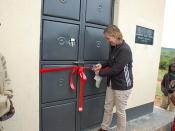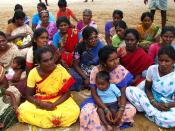Partnerships for Change: A Cost Benefit Analysis of Self Help Groups in Ethiopia
"Self Help Groups come together, to do what they cannot do individually"
In 2002, Tearfund supported the introduction of the Self Help Group (SHG) approach to Ethiopia. The first five SHGs were started by 100 women in Nazareth Town (Adama). Today the number of SHGs in Tearfund funded programmes has increased to well over 12,000 across Ethiopia, impacting over 1 million people, at a cost of approximately ã5 (â¬6) per SHG member, or approximately ã1 (â¬1.2) per beneficiary per year.
A study was commissioned to document both the qualitative and quantitative evidence of the outcomes of this approach. Six programmes were the subject of this analysis, representing a population of nearly 18,000 people, of which nearly 550 people were interviewed through focus group discussions. A cost benefit analysis was used to assess value for money, offsetting costs with benefits from increased income, increased school attendance, access to low interest loans, and decreased stress sales.
The ongoing benefits of these changes could not be monetized, but cannot be stressed enough - better health care, improved safety nets for the poor, and improved quality of life.
Impact Assessment: SHGs are groups of 15-20 people, usually chosen from the poorest sectors of the community. Facilitators help each group to develop healthy relationships, set up a saving scheme and establish by-laws on how they will operate. Group members save a small amount each week. In time, members can take small loans that grow in size as the capital grows. These funds are invested in education and health care, as well as small businesses.
The SHGs have had far reaching impacts on their members:
The core of the model is based on relationships, and as a result, perhaps the...


